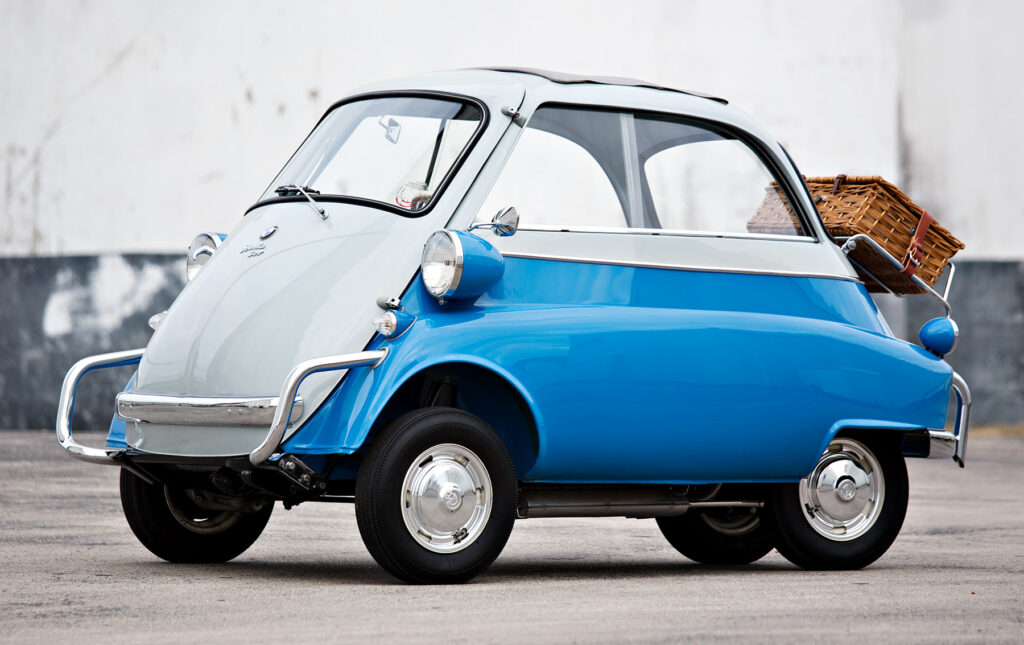
The 1959 BMW Isetta stands as a remarkable testament to efficient design and economic recovery in the world of automobiles. A beacon of hope in post-war Europe, this tiny yet powerful ‘bubble car’ steered BMW from the brink of bankruptcy to a path of recovery and success.
Evolution of the BMW Isetta:
Originating from the innovative minds at Iso SpA in Italy, the Isetta soon attracted the attention of BMW. In the mid-1950s, with a keen eye on the rising demand for affordable and fuel-efficient transportation, BMW licensed the design. Making significant alterations, including replacing the original two-stroke engine with their reliable four-stroke motorcycle engine, BMW launched its version of the Isetta in 1955.
By 1959, the Isetta had not only established itself in the market but had also become a symbol of the economic resurgence in Germany and other parts of Europe. This compact car had defied expectations, showcasing that small, economical vehicles could carve out a significant market share in the automobile industry. Its continued success in 1959 underscored the enduring appeal of this innovative and practical car.
1959 BMW Isetta Specifications:
The 1959 BMW Isetta upheld the design and performance characteristics that had made it popular. Its 247cc, single-cylinder, four-stroke motorcycle engine at the rear generated 12 horsepower at 5800 rpm. This power output, while modest by some standards, was perfectly suited to the Isetta’s intended purpose — providing reliable and efficient transportation for short commutes and city driving.
The car’s top speed hovered around 53 mph (85 km/h), more than adequate for its intended usage. However, where the Isetta truly shone was in its fuel economy. Achieving around 78 mpg (around 3 liters per 100 km), this compact car was a particularly economical choice, especially significant in a period where economies were still recovering from the war.
In terms of design, the 1959 Isetta retained the distinct elements that made it stand out. The famous front-opening door remained a significant feature, allowing for easy access in the tightest of parking spaces. The car’s compact dimensions did not compromise its cabin comfort, with enough room to comfortably accommodate two adults.
As for the suspension, the 1959 Isetta featured an independent front suspension with a leading arm and coil springs. The rear had a semi-elliptical leaf spring. It maintained its drum brakes on all wheels, proving effective for the vehicle’s size and speed.
Final Thoughts:
The 1959 BMW Isetta is a profound statement of the adage that “big things come in small packages.” It not only played a pivotal role in BMW’s history but also revolutionized the perception of small cars. Today, the Isetta is revered as a classic icon, with car enthusiasts globally cherishing this innovative and symbolically significant vehicle. Experience the tale of resilience, innovation, and the economic miracle encapsulated in the history of the 1959 BMW Isetta.
